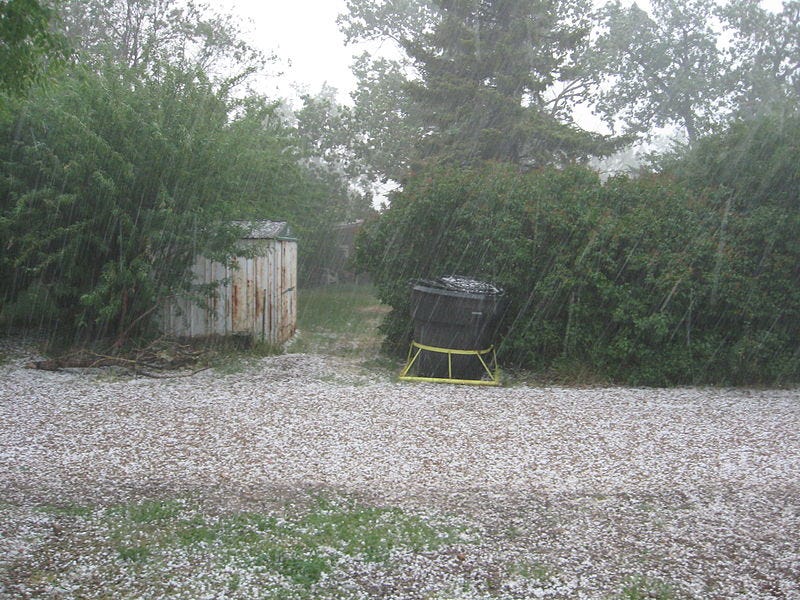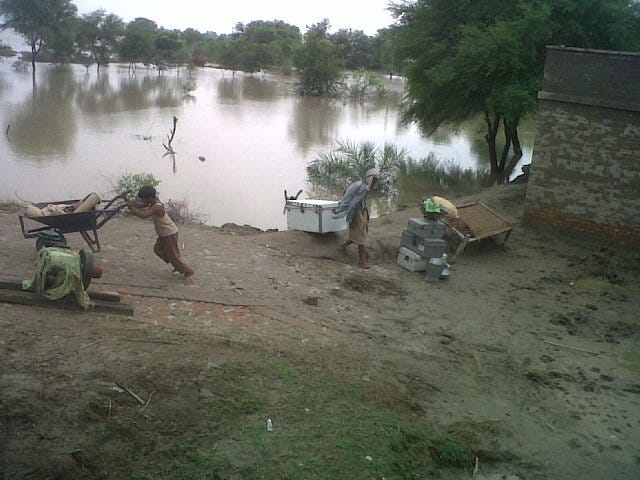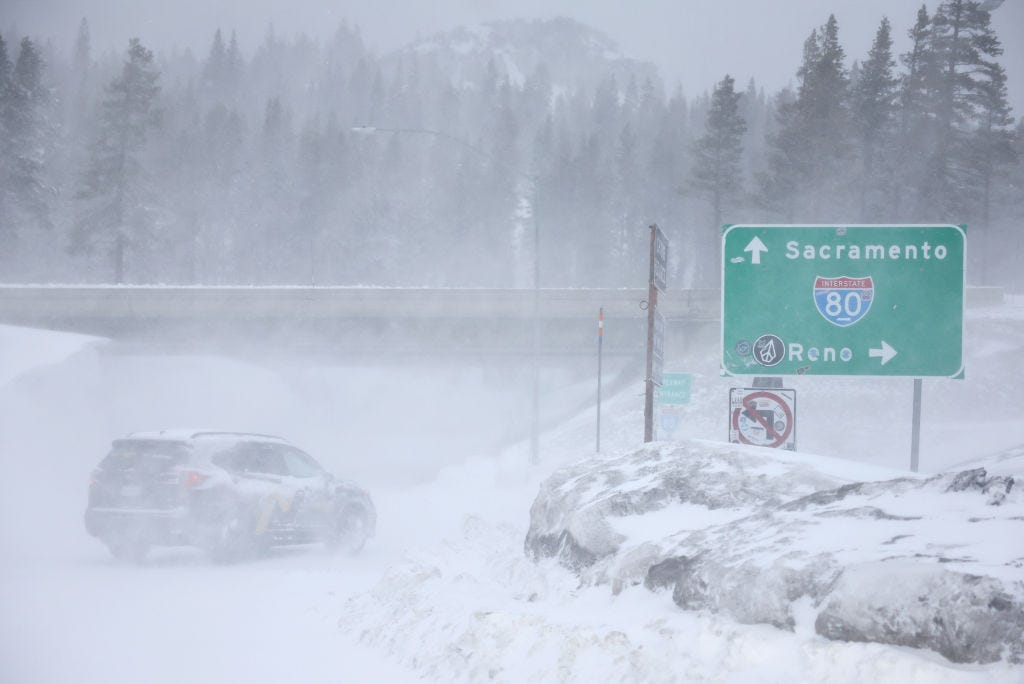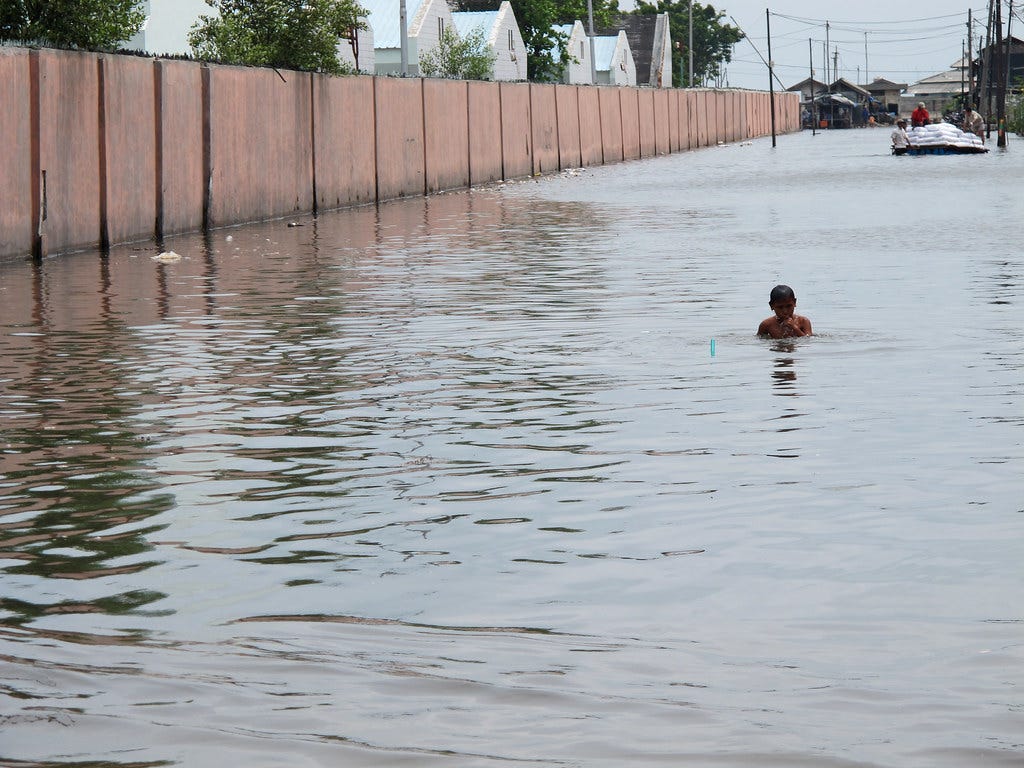March of Extreme Weather Events Across the Globe
Ground Report is providing valuable environmental news and insights. If you’ve found our content useful, we kindly ask you to consider upgrading your subscription.
Hi everyone, Welcome back, my name is Wahid Bhat, and today we're going to talk about the Extreme weather we've seen around the world during the first 15 days of March 2024. The onset of March witnessed catastrophic floods, fires, and various other extreme weather events across the globe. Get ready, because this trip through nature's wild side is going to be eye-opening and maybe a little scary.
The extreme weather events we saw in 2023 are not just random occurrences. This is becoming even clearer in 2024 as we are witnessing a series of related extreme events in North America and across the globe. For instance, in February 2024, severe storms led to major flooding on the West Coast, followed closely by heavy snowstorms in the Sierra Nevada that buried the area under 11 feet of snow.
Similarly, the first 15 days of March have brought extreme weather events in various parts of the world, including India, Pakistan, and Argentina. These events are part of a larger pattern indicating significant shifts in our climate. So, let’s discuss.
India’s hailstorms
Heavy rains and hailstorms pummeled North India, wreaking havoc on precious crops like wheat and gram.
Devastating losses, with estimates indicating damage to a significant portion of crops in regions like Malwa and Punjab. Hailstorms weren't picky; they made their presence felt in states like Uttar Pradesh, Uttarakhand, and Madhya Pradesh as well.

But that's not all. Himachal Pradesh faced a barrage of avalanches and landslides triggered by relentless snowfall and rainfall, leading to road closures and property damages. Meanwhile, in Jammu and Kashmir, landslides shut down vital national highways, showcasing the vulnerability of our mountainous terrains to such natural calamities.
As if that wasn't enough, Maharashtra's Vidarbha region felt the sting too, with crops like cotton, wheat, gram, and tur bearing the brunt of torrential rains and thunderstorms.
Pakistan 30 hours rains
Now, let's shift our focus to Pakistan, where relentless rainfall lasting an astonishing 30 hours caused chaos in Gwadar, Balochistan. The heavy rains triggered flooding across the region, claiming the lives of at least 39 people. Authorities reported that rain-related incidents took the lives of 37 individuals across Pakistan in the past 48 hours.
The widespread rains not only led to house collapses but also triggered landslides, blocking roads, especially in the northwestern Khyber Pakhtunkhwa (KPK) province.

Reports from the provincial disaster management authority revealed that at least 27 people, mostly children, lost their lives due to rain-related incidents in Khyber Pakhtunkhwa province bordering Afghanistan since Thursday night.
Additionally, the torrential rains caused injuries to 37 people across ten districts in the Khyber Pakhtunkhwa province, including Bajaur, Swat, Lower Dir, Malakand, Khyber, Peshawar, North and South Waziristan, and Lakki Marwat.
It's important to recognize the broader context here. The United Nations ranks Pakistan among the top 10 countries most vulnerable to climate change impacts, despite its minimal global carbon emissions contribution.
California Snow Storm in Spring
Can you believe the wild winter storm that just hit California in Spring? It was like something out of a movie! The blizzard came in strong, covering parts of California in tons of snow, burying cars and even houses under all that white fluff.
People around here were stunned, including locals and visitors who couldn't help but share videos of the crazy scenes. I mean, the landscape looked completely different after the storm, especially in the higher areas that got hit the hardest. Weather forecasts were even talking about up to 12 feet of snow in some places, and areas higher up were told to expect about 8 feet of the fluffy stuff.
And get this, we're almost in spring! But instead of flowers blooming, we got hit with blizzard warnings all over California. The heavy snow and crazy winds made it super hard to see, which made driving a real challenge and pretty dangerous.
Texas wildfire
The Smokehouse Creek Fire, which became the largest wildfire in Texas history, has nearly been fully contained after burning almost 1.1 million acres. However, officials are concerned about facing "extremely critical fire weather" in the Panhandle, posing a potential challenge for responders.
As of Wednesday morning, the Texas A&M Forest Service reported that the Smokehouse Creek Fire is 89% contained and has scorched around 1,058,482 acres. The nearby Windy Deuce Fire, spanning over 144,000 acres, is 94% contained.
Despite the progress, there is still a risk of the fires spreading further or new ones starting. The utility company has acknowledged its role in starting the Smokehouse Creek fire, which resulted in devastating losses, including the lives of at least two people and thousands of animals. The effects of this catastrophe may persist for years to come.
Indonesia floods
In March 2024, intense rains hit Indonesia's Sumatra island, leading to flash floods and landslides that claimed the lives of at least 26 people, with 11 others reported missing. The heavy rainfall triggered a disaster in West Sumatra province, causing rivers to overflow and landslides that engulfed homes. As the water levels receded, rescuers discovered more bodies.
The flooding affected nine districts and cities in West Sumatra province since Thursday, with a major mudslide late on Friday causing a river to burst its banks and sweep through villages in Pesisir Selatan district.
The floods also caused damage to infrastructure, including 26 bridges, 45 mosques, and 25 schools. Thirteen roads and two irrigation systems were destroyed, leading to the submergence of 113 hectares (279 acres) of rice fields and 300 square meters (3,230 square feet) of plantations, according to the agency.
Indonesia frequently experiences landslides and flash floods due to heavy rains, affecting mountainous areas and floodplains where millions of people reside across the archipelago nation of more than 17,000 islands.
Argentina floods (the worst natural disaster)
On March 3, 2024, Corrientes, Argentina, faced heavy rainfall, with around 300 millimetres falling in less than five hours, leading to what local officials called "the worst natural disaster" in the city's history. This sudden and severe flooding prompted local authorities to declare a state of emergency. Due to the flooding, approximately 800 people had to be evacuated.
The emergency declaration disrupted public transportation, and about 14% of the city's tree cover has been lost since 2000. Videos captured the flooding in neighbourhoods like Parque Cadenas Norte.
Seizième Mille, Mauritius floods
Flash floods have wreaked havoc in Seizième Mille, Mauritius, due to Cyclone Belal. The cyclone battered the Indian Ocean island causing widespread flooding, submerging cars along roads in the capital, Port Louis, and leading to the abandonment of about 100 vehicles. One person has died, and warnings for environmental risks on the island remain in place.
TOP ENVIRONMENT NEWS
Niwari, MP: Hailstorm destroyed crops being fed to cattle, debt on farmers to rise
Virendra Kushwaha (52) from the Niwari district of Madhya Pradesh got his daughter married only last year. He had taken a loan of Rs 3 lakh for this marriage. Out of which, he had paid Rs 1.5 lakh. This year he had sown wheat, gram and peas as Rabi crops, and was a good harvest to repay his outstanding loan. Even on the last day of February, his lush fields gave him no reason to doubt his belief. Read More here
India’s Coal Mines’ Methane Emissions Tripled From The Officially Reported Emissions To UNFCCC
India’s coal mines have seen a massive increase in methane emissions, according to the latest report from the International Energy Agency (IEA). The report highlights India as the third-largest emitter of methane from coal mines globally in 2023. Read More Here
February 2024: Another month, another record – earth’s heat continues to rise
The year 2024 has seen unprecedented temperature increases, with both January and February setting new records for heat. February’s temperatures soared to 1.77°C above the historical average for the month in the pre-industrial era, marking it as the warmest February on record. Read More Here
Bengaluru decides to cut 20% water supply of Defense, Railways, Universities and private companies
The Bengaluru Water Supply and Sewerage Board (BWSSB) has declared a significant reduction in the water supply to the city’s bulk consumers in response to the escalating water crisis. The decision aims to reduce water consumption by entities using over 2 crore litres monthly, affecting 38 major users such as defense establishments, Railways, HAL, NIMHANS, Victoria Hospital, Bangalore University, and private companies with a 20% cutback. Read More Here
Stay tuned for more updates on this unfolding story. Until next time, this is Wahid Bhat signing off!
Thank you for reading. Ground Report is available at no cost. If you find it beneficial, please think about upgrading your subscription to support our work. Should you wish to get in touch, you can reach us at Greport2018@gmail.com.
That’s all for today’s environmental news. If you found these stories interesting and want to stay updated, don’t forget to subscribe to our newsletter. You can also follow us on our social media channels for more environment-related news and updates.
Follow Ground Report for Environment and Under-Reported issues in India. Connect with us on Facebook, Twitter, Koo App, Instagram, Whatsapp and YouTube. Write us on GReport2018@gmail.com.







